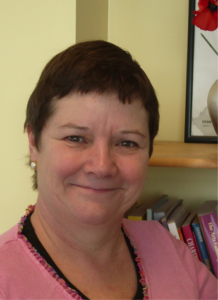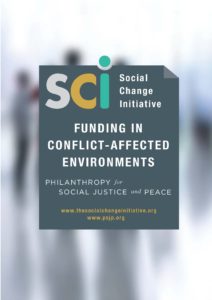 “The economic and financial cost of conflict and violence in 2014 has been estimated to be US$14.3 trillion, or 13.4% of the global economy. Yet it is the human cost that is most devastating, rendering conflict the biggest obstacle to human development. . .Every day in 2014 conflicts and violence forced approximately 42,500 people to flee their homes and seek safety either internally or across borders. . . Nearly 1.4 billion people live in fragile situations, and the population is projected to grow to 1.9 billion by 2030. . .”
“The economic and financial cost of conflict and violence in 2014 has been estimated to be US$14.3 trillion, or 13.4% of the global economy. Yet it is the human cost that is most devastating, rendering conflict the biggest obstacle to human development. . .Every day in 2014 conflicts and violence forced approximately 42,500 people to flee their homes and seek safety either internally or across borders. . . Nearly 1.4 billion people live in fragile situations, and the population is projected to grow to 1.9 billion by 2030. . .”
Report of UN Secretary General, Ban Ki-Moon for the World Humanitarian Summit (2016)
This excerpt is quoted in a recent publication Funding In Conflict-Affected Environments by Avila Kilmurray, published by the Social Change Initiative Belfast and the Working Group on Philanthropy for Social Justice and Peace. We are living in an increasingly fragile world witnessing the rise of intolerance and hate, right-wing populism and authoritarian trends everywhere. Conflicts within nation-states are on the rise. It is, therefore, imperative upon philanthropy to examine its role and be placed to have maximum positive impact. WINGS spoke to Dr Avila Kilmurray about what lessons we might draw from the new resource.
WINGS: What roles can philanthropy play in conflict-affected environments?
A.K.: Philanthropy can play a multiplicity of roles in conflict-affected environments. Independent philanthropy is particularly important because it can be responsive, flexible and be prepared to pilot initiatives. During periods of rising tension, philanthropy can support locally-based activists to highlight the clustered grievances that can sow the seeds of violence. It can also work to build confidence and capacity in non-violent methods of activism. During periods of violent conflict, philanthropy can stand in partnership with human rights defenders and those organizations that seek to maintain bridges and communication in often bitterly divided communities. There are practical areas of work that philanthropy can also support – helping local projects that meet the needs of displaced populations or individuals and families that have been injured or bereaved in the violence. The funding of crisis management and back channel communication is another important approach to alleviating the violence.
When a society is emerging from conflict, philanthropy can fund peer exchange visits with activists from other societies that have experienced violence and conflict transformation. Exchange visits are as important for combatant, and other groups, involved in peace talks, as they are for community-based and civil society groups. Funders with a specific thematic focus can also make important contributions to peacebuilding. Supporting the establishment of shared facilities can help address division; micro-enterprise grants can help re-settlement of ex-combatants and internally displaced people; whilst investment in peace education, peace-sensitive media reporting and confidence building with potentially marginalized groups to ensure their inclusion is vital for the sustainability of the peace process. And speaking about sustainability, remember the importance of investing in women’s participation in decision-making. In short, the roles are as wide and varied as the philanthropic interests of donors themselves.
WINGS: What are some of the principles to bear in mind in order to ‘do no harm’ in such a situation?
A.K.: Effective support for peace building and conflict transformation requires thoughtful and committed philanthropy. The Peace and Security Funders’ Group has eight critical tips for funders working in conflict and post-conflict settings. These include (i) Do your research – get to know the situation and who is doing what in terms of both the politics and funding. (ii) Be prepared to take risks – peace building does not fit neatly into linear log frame methodologies. What is possible will depend on the current state of play in terms of the local conflict. (iii) Focus on conflict prevention – where possible; and (iv) Know your partner – take the time to establish relations of trust with local activists, grantees and other key stakeholders. (v) Support indigenous efforts – a crucial recommendation given that it is local people that bear the impact of the conflict as well as are the basis of a sustainable people. Funders may move to another area, local people remain. (vi) Provide core support to allow grantees to be flexible in volatile, changing settings, and (vii) Be a connector – use the added value to funder networking to connect local actors with national and international agencies, expert peace building NGOs and political thinkers. Finally, (viii) Be prepared to stay the course – peace building is a long-term commitment.
In addition to these principles it is important that grantmaking is made in the context of a peace and conflict analysis. If a grant is provided, who are the perceived beneficiaries as against those groups that might see themselves as being excluded? Donor judgements must take account of the fact that rumor, misperception and suspicion run strong in conflict-affected environments. They need to take the time to think through the local implications of their investment. However with adequate research, thought and consultation with local people, these risks can be ameliorated.
WINGS: Are there examples of positive contributions by independent trusts and foundations in deeply divided and conflict-affected societies?
A.K.: Absolutely. There is a legion of good examples. Just to refer to a few – the UK-based Joseph Rowntree Charitable Trust is an excellent model of responsive, supportive, long-term grantmaking in conflict-affected environments. They have provided the money to create pathways that allow combatants to move away from violence. Investing in this early work is not easy because it requires a deep faith in the essential goodness of human nature and the power of peace. The Rockefeller Brothers Fund has lengthy experience of funding in the deeply divided societies of Israel/Palestine and Eastern Europe; whilst the Berghof Foundation supported conflict resolution for many years in Sri Lanka and many other conflict areas.
A large number of independent donors and foundations invested in post-conflict South Africa, where there was the example of a joint investment by Atlantic Philanthropies, the Ford Foundation and the Charles Stewart Mott Foundation in meeting the costs of transforming the Johannesburg Fort at Constitution Hill into a museum on the struggle against apartheid. In a very different example, the Robert Bosch Stiftung brought young people together in a divided society in Eastern Europe through the drawing power of music. There is also the invaluable contribution of those funders, like the Oak Foundation and Mama Cash that support women’s initiatives that can be so important to the sustainability of peace. Whilst the Foundations for Peace Network represents locally-based funders working in divided societies that play a very important role in making relatively small grants to encourage peacebuilding. Funders like the Neelan Tiruchelvam Trust in Sri Lanka, Tewa in Nepal and AlvarAlice in Colombia are examples of how grants can be made in the local context to build confidence in an alternate approach to violence.
WINGS: What role can umbrella bodies within philanthropy (such as peer networks, associations of foundations and others) play in supporting the independent trusts and foundations to make a positive contribution in conflict environments?
A.K.: The first thing that they can do is to keep in touch with those thematic funder networks that focus on philanthropy and peacebuilding. The Peace and Security Funders’ Group and the Foundations for Peace Network have already been mentioned. They can also ensure that information about support for those donors that are interested in this field of work is readily available, as are training and peer exchange workshops. It is understandable if trustees and staff in trusts and foundations may be worried about funding in conflict-affected environments for the first time, but support is available and partnership working, with other donors, is possible.
The other thing that umbrella bodies and networks can do is to create the space for those funders – particularly locally based funders – that are working in conflict areas to share their experience. When I was CEO of the Community Foundation for Northern Ireland over a period of twenty years of conflict and peace building, I used to feel that it was living in a different reality when I attended many philanthropic conferences. People were politely interested but rarely were prepared to engage with the difficult issues that I was facing. If philanthropy for peacebuilding appeared on conference agendas at all, it was both a novelty and somewhat exotic. How refreshing it would be if philanthropy for peacebuilding was a regular item on the agenda of peer networks, associations of foundations and similar gatherings.
WINGS: Where can we find more information about the role of philanthropy in conflict-affected environments?
A.K.: The main study, and summary document, of ‘Funding in Conflict-Affected Environments’ is available on the websites of both Philanthropy for Social Justice and Peace, which originally commissioned the work, and on The Social Change Initiative website, which supported the production of the documents. In addition, however, there are valuable resources on the Peace and Security Funders’ Group website and that of the Foundations for Peace. Other important sources of information include resources produced by the Berghof Foundation and by the Institute for Integrated Transitions, which have published material on funding during periods of transition.
This post first appeared on January 24, 2017 in Philanthropy in Focus, the newsletter of the WINGS global network.